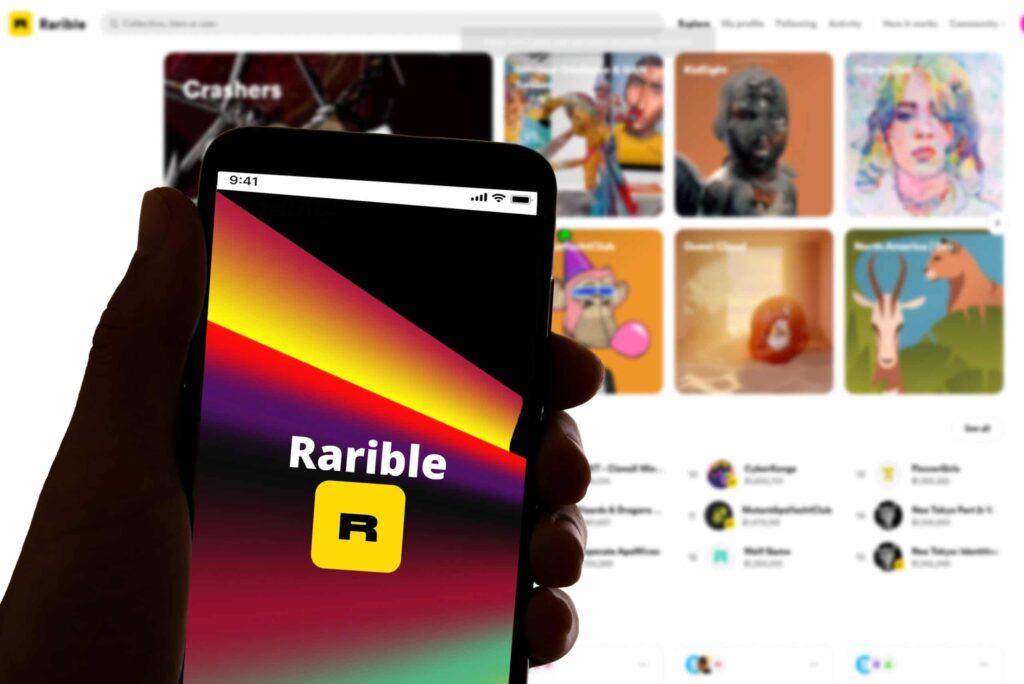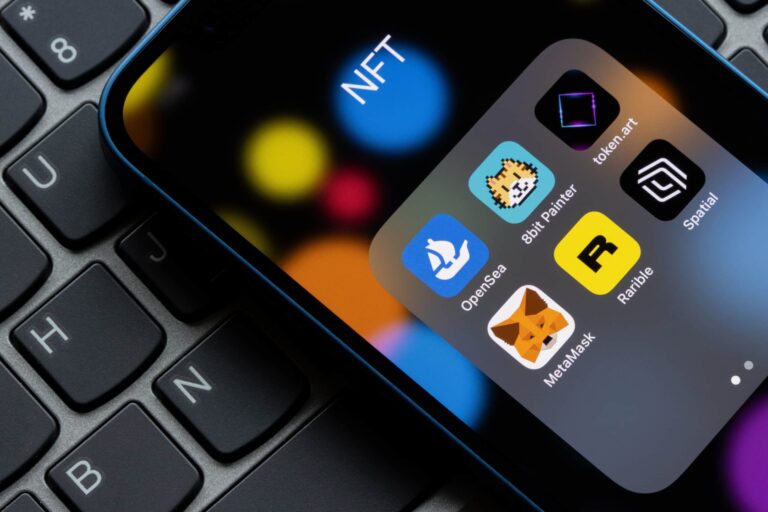
Rarible is one of the biggest and fastest-growing NFT marketplaces on the Ethereum blockchain. Like OpenSea, Rarible NFT deals with all kinds of Non-Fungible Tokens, including images, digital art, and memes. Recently, it has started to become a Decentralized Autonomous Organization (DAO) using its governance token, RARI. Read along to learn more about Rarible and how it is helping creators and buyers ease into the investment of NFTs. This guide will not only give you information about the Rarible NFT marketplace, but it will also teach you how to get started on it.

Rarible nft marketplace is a software platform created by Alex Salnikov and Alexei Falin, in November 2019. Although the launch was modest, they have become a vast marketplace with $24 million in total trading volume.
Rarible NFT marketplace allows users to list their Non-Fungible Tokens. These tokens are proof of ownership against an asset. And these tokens are embedded in a blockchain. In the case of Rarible NFT, it primarily uses the Ethereum blockchain to carry its transactions and functions. Therefore, you will need ETH (Ether) to perform transactions on this platform.
Also, one thing to note about this marketplace is that it also allows the trading of NFTs. For instance, a traditional marketplace will only allow you to create, buy, or sell NFTs. However, Rarible goes a step ahead and lets you trade as well, diminishing the need for a middleman.

RARI Token is probably the most exciting and user-friendly feature of Rarible NFT. Till 2020, Rarible was a centralized platform that allowed creators to list their crypto collectibles and users to buy them. However, a radical change came in 2021.
Rarible introduced an ERC-20 governance token called RARI. The team behind Rarible announced the motive behind this change is to shift the platform to a Decentralized Autonomous Organization (DAO). It means that the users will now vote on system upgrades, moderate creators, and curate featured artworks.
The maximum supply of these ERC governance tokens is 25 million. And there are three options or ways to get them, and none involves buying. About 65% of RARI tokens are reserved for Rarible artists and users. 30% Rari is for Rarible investors and team. The remaining 10% were airdropped to random NFT holder accounts. From this 10%, only 2% were Rarible users; the rest were general NFT accounts.
Now, let us see how to buy collectibles and crypto art NFTs on the Rarible market.
As mentioned, Rarible works on the Ethereum blockchain. Therefore, the artists sell their collectibles via ETH (Ether). So, the first step for you is to create a digital wallet such as MetaMask, Coinbase, etc. You can purchase ETH directly from your wallet or connect it to an exchange.
Next, you have to connect the crypto wallet with Rarible. When you connect, you will get the options to buy or sell your digital collectibles or Non-Fungible Tokens. The platform then allows you to view the ongoing sale of NFTs. You can buy the collectibles listed at a fixed price with one click. Whereas you will have to bid if an NFT is sold through auction. Then, wait till the auction ends. Auction sales can go on for days; keep that in mind before bidding.

Technically, CryptoPunk #9998 sold for $532 million. This number is jaw-dropping, even by the standard of the crypto market. However, one caveat is that the buyer was also the seller. So, there are some reservations regarding this sale.
Officially, at the time of writing, CryptoPunk #4156, sold for $10.2 Million, is currently the most expensive CryptoPunk NFT sale ever. Also, you should know that this is not a rare case. Many of the rare assets in this selection go for millions. For instance, #3100 was priced at $7.58 million.
According to Larva Labs, the lowest price of a CryptoPunk is 63.99 Eth (USD 245,606.41). And they also mention the total sales value of this collection, which is $1.79 Billion (USD). As discussed, you can not only buy or sell NFTs but mint your own Non-Fungible Token as well. For this purpose, you will have to fill a form first and attach your art or collectibles. If you get verified, you can start the minting process.
When you mint your first NFT, you will have to pay two network fees. One for your wallet to interact with Rarible, and the other to embed your tokens on the Ethereum Blockchain and IPFS (InterPlanetary File System). After that, you will only have to pay the transaction fees, also called gas fees. These gas fees are for the compute resources the blockchain uses to carry out the transaction.
Also, as you know, Non-Fungible Tokens are unique. But Rarible NFT provides you with two ERC protocols for minting your NFTs. ERC-721 protocol allows you to mint a unique item, whereas, ERC-1155 allows you to create multiple copies of the same item.
A while ago, Rarible integrated Flow with its platform. Flow is also a decentralized blockchain like Ethereum. The only difference is that Flow is price and energy-efficient. The interesting part of this integration with Rarible Protocol is that Flow is optimal for gaming NFTs. This means you can now mint gaming NFTs for a very low price on Rarible.
And an even latest news is that Rarible has integrated with Tezos. For those who don’t know, Tezos is also primarily a gaming NFTs related blockchain. Ubisoft, the gaming company, also uses Tezos, which, in turn, means that you can now buy Ubisoft Digits from Rarible.
That’s it for our Rarible NFT guide. Just to sum it all up, we talked about the Rarible platform and how it is moving towards its goal of being a DAO. Then, we saw how we can get started with the platform, and how to mint our own NFTs using the given tools. Lastly, we learned that Rarible is a multi-chained platform, meaning it supports multiple blockchains. Hope you learned a few things from this guide!